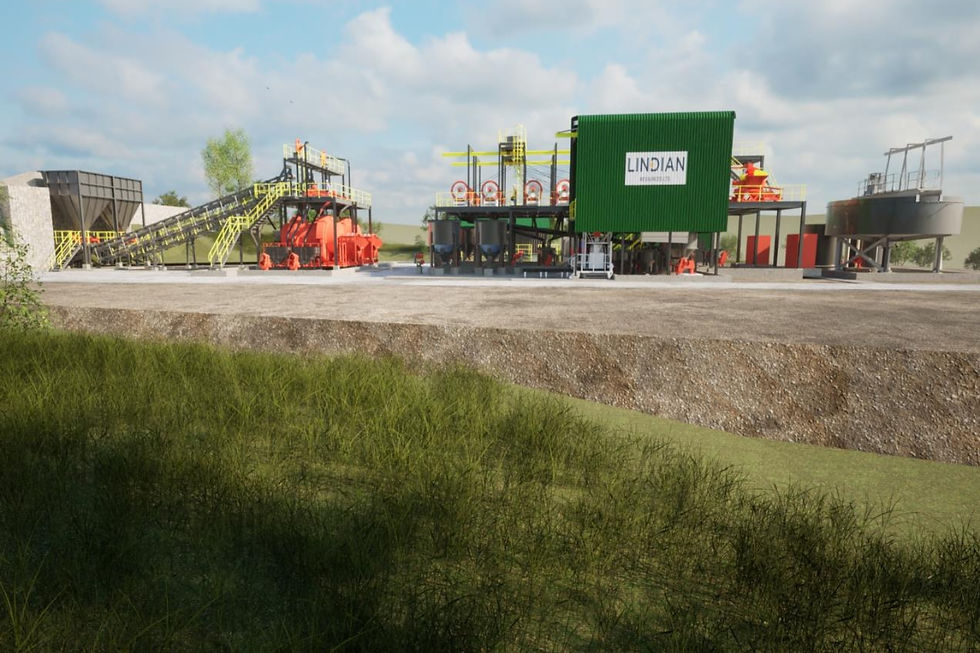Edge-of-seat ride for Lindian after 1000m rare earths hole shows big promise
- Matt Birney

- Jul 6, 2023
- 3 min read
Updated: May 2, 2024

Lindian Resources’ big punt that its Kangankunde rare earths deposit in Malawi could extend well below the existing 300m might just pay off after a second 1000m diamond drillhole showed signs of potential mineralisation all the way down.
The monster intersection will now be assessed by a wave of assays in the weeks ahead and the company will soon deliver its highly-anticipated maiden mineral resource estimate to the market.
Punters pushed Lindian shares up more than 13 per cent for the day after the company said the entire 1000m hole from surface “visually” looked to contain an abundance of “monazite” ranging from 0.5 per cent to 3 per cent.
The monazite mineral occurrence is significant given that the existing known deposit higher up occurs in monazite. While only about 70 per cent of the monazite grade typically turns out to be rare earths, with potentially 1000m of mineralisation on its hands, Lindian has now created significant anticipation for just how big its maiden resource might be.
Kangankunde is already an extraordinary rare earths deposit by any measure. Lately, it has been throwing up some eye-watering drill intercepts such as 293m at 3.66 per cent total rare earths oxide (TREO) from just 4m, 180m at 3.46 per cent TREO from surface and even a 49m hit going as high as 5.47 per cent TREO, also from surface. Remarkably, all were still mineralised at end-of-hole – hence the decision to probe the project to 1000m.
Notably, Lindian also says it can beneficiate its ore by using simple gravity rather than spending possibly hundreds of millions of dollars on a chemical-based floatation-style plant, providing another significant tick along the pathway to production.
The company has just wrapped up its phase-two drilling program designed to test the depth potential of the deposit and with visual mineralisation still showing at 1000m mark. But it may need to fire up the rig again to discover the true depth extent of its mammoth deposit.
Rock samples from core obtained in the first drillhole are currently at the laboratory, with the assay results due back progressively from late next month.
Cutting and sampling of core from hole two is underway at the project, with the initial 400m of samples already despatched to the lab. The remainder of the second hole’s core will now be cut and sampled before being sent for analysis. Turnaround times for assays are estimated to be six to eight weeks.
Phase-one drilling at Kangankunde started in October last year and consisted of 12,529m of reverse-circulation (RC )drilling and 1643m of diamond core work. The final 1700 phase-one drilling samples are currently in assay and are expected to be released to the market in the near future.
Management says it is already planning an infill drill campaign that will aim to increase its resource confidence from the inferred to indicated category.
We are pleased to confirm the successful completion of Lindian’s Phase 2 Exploration Target drill program, with the second drillhole reaching the target depth of 1,000m. Similar to the first drill hole, the second drillhole in the Phase 2 program showed textual features consistent with surface mineralisation to end-of-hole. These assays will help the Company determine how far Kangankunde’s mineralisation extends at depth and provide context to an Exploration Target estimate below the Mineral Resource Estimate. Lindian Resources chief executive officer Alistair Stephens
The region around Kangankunde is not new ground for rare earths exploration, with the French geological survey identifying it as prospective way back in the 1970s – and the area has made its way into economic geology journals 11 times since then.
The deposit is now considered one of the world’s biggest rare earths operations outside China and Lindian will progressively acquire 100 per cent ownership of the project from private Malawian operators Rift Valley Resource Developments, with the project situated on an approved mining license issued by the Malawi Government.
The project is close to a main highway, rail to port and high-voltage power systems. A civil works program is being defined for the design, engineering and construction of the company’s proposed stage-one processing plant, with an initial throughput of 220,000 tonnes of material per annum targeted to produce a monazite concentrate, before expanding to 440,000 tonnes a year.
Lindian is moving quickly now, having only been in the region for eight months and it is already progressing with additional civil works planning for a mine laydown area, water supply and storage, power, weighbridge, 5km access road, workshops, administration building and tailings storage. Planning for future expansion is set to start in November this year.
With two 1000m holes now showing at least visual indicators of rare earths mineralisation all the way down, Lindian will be off to the races if the lab backs up its initial observations.
Is your ASX-listed company doing something interesting? Contact: office@bullsnbears.com.au


